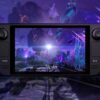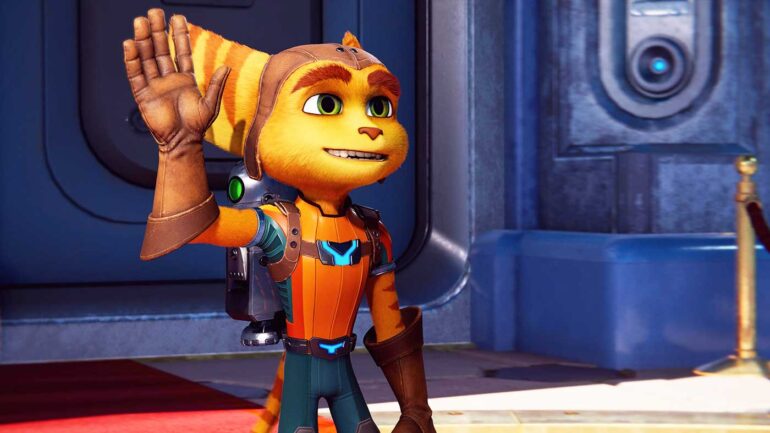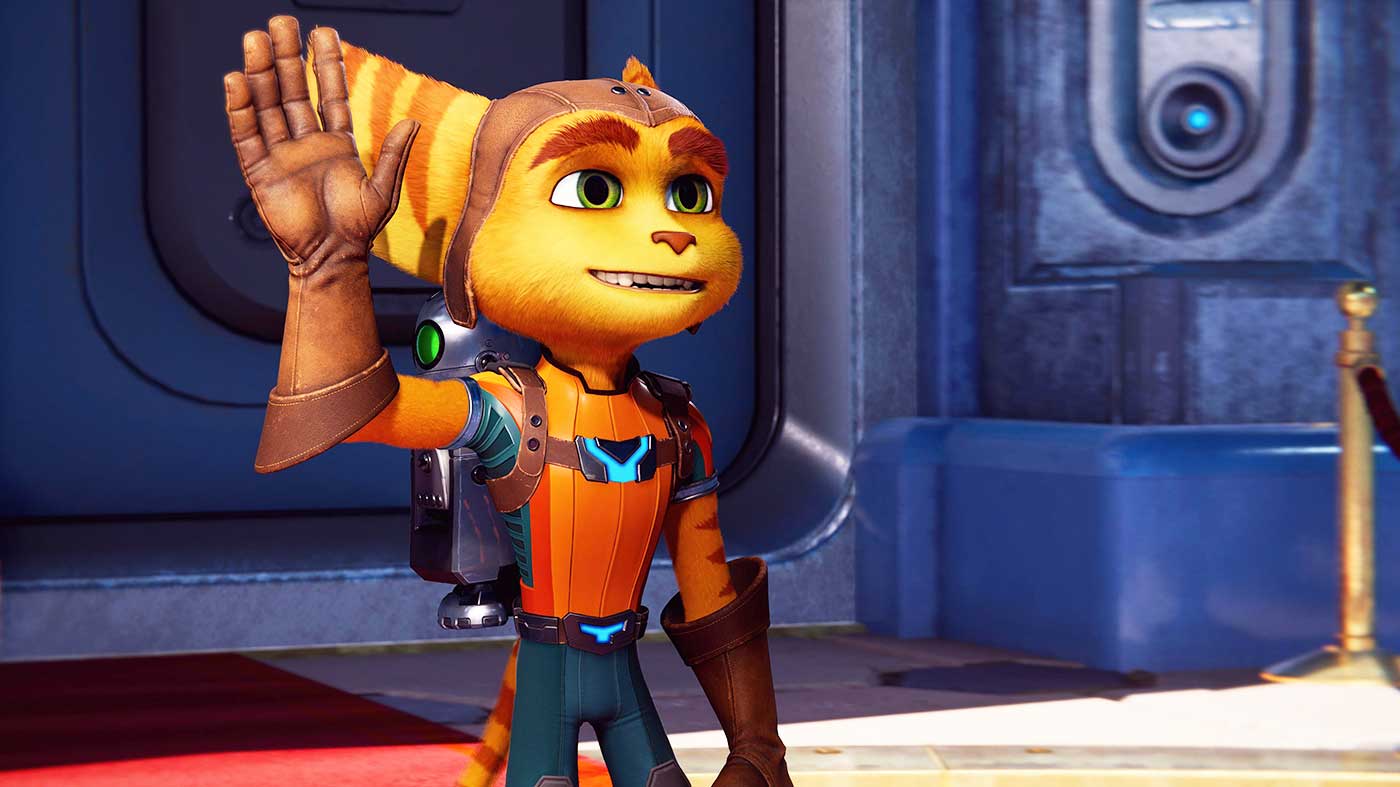Writing the intro to a video game review is hard – I can’t begin to imagine what it’s like to design the intro to a video game. Insomniac seems to have figured out the secret sauce though, because Ratchet & Clank: Rift Apart’s opening is an absolute belter. Whoever thought to frame the game’s tutorial around a series of playable parade floats based on Ratchet & Clank’s previous exploits, only to then have the villain appear from inside a float of himself, deserves a promotion. It’s the perfect setup for the rest of the game, too. This is an unabashed celebration of Ratchet & Clank, but it’s also a brand new adventure with a plethora of surprises in store and perhaps even a glimpse into the series’ future.
Rift Apart picks up after the events of Into The Nexus, though given that entry is now two generations old it’s mercifully easy to slip into whether or not you’re familiar with the series. The gist is, after discovering that Ratchet’s entire Lombax species weren’t wiped out as once thought – instead escaping into another dimension – Clank secretly repairs a device that can bridge the fabric of space and take them to Ratchet’s people, gifting it to him during the parade. Naturally this is where series’ regular villain Dr Nefarious comes in, swiping the Dimensionator and causing a chain of events that leaves the three of them stranded in a completely new dimension. It just so happens that this particular dimension was scouted by Nefarious as being a close parallel to their original, albeit one where his evil plots have actually succeeded and he exists as Emperor.
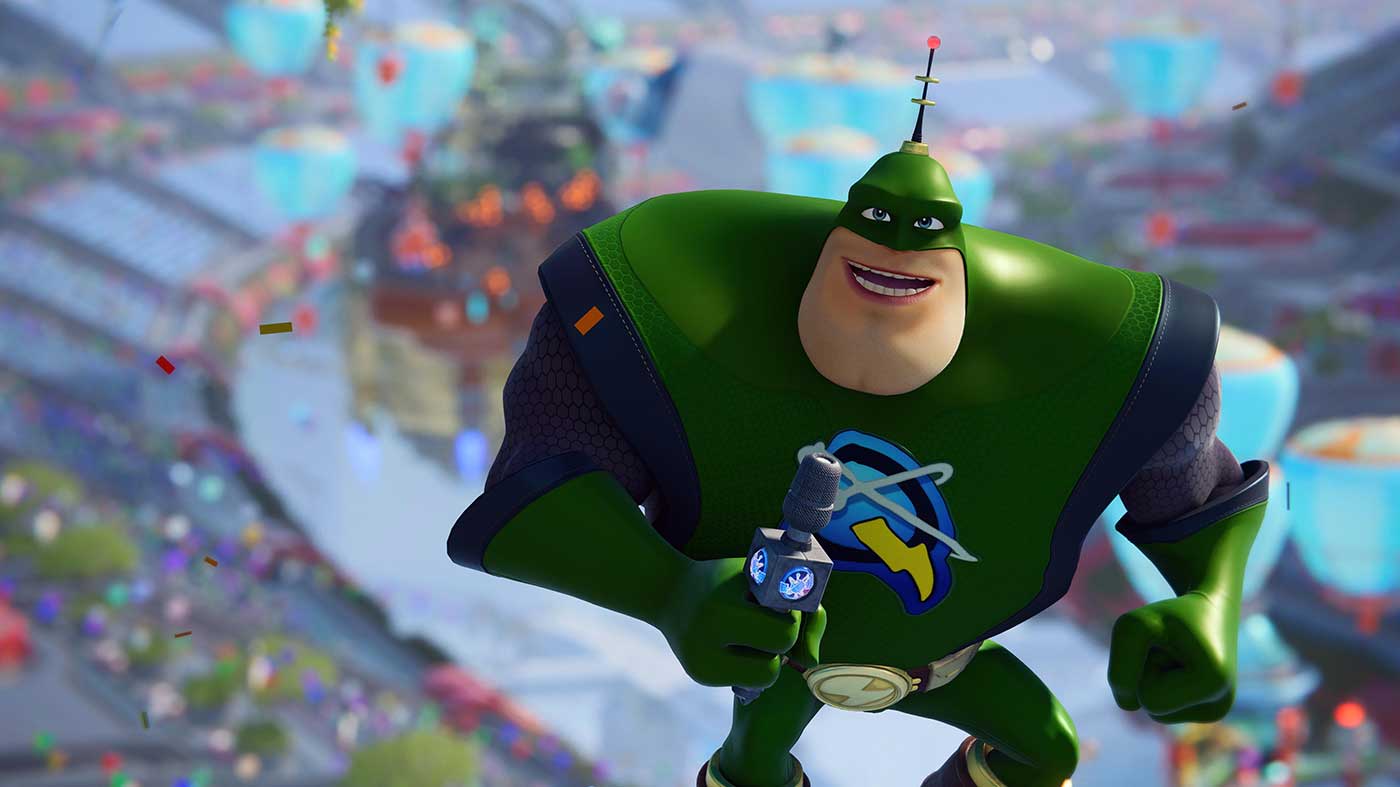
In search of a way to thwart Nefarious, build a new Dimensionator and send themselves home, Ratchet and Clank navigate this new dimension with the help of some oddly familiar faces. It’s no secret by now that Ratchet has an alternate-universe counterpart in a female Lombax named Rivet, who the pair cross paths with and who agrees to help them thwart this extra Nefarious and get them home. Rivet is, at the risk of hyperbole, absolutely phenomenal. Unlike Ratchet – whose pairing with Clank and status as a repeat hero means he’s surrounded by friends in a universe that knows peace – Rivet is a lone wolf, hiding out on a backwater planet where she does her best to protect its vulnerable population but typically lives life on the back foot. She’s a little quirky, she’s kind, but also hardened and resourceful, and a great example of how huge of an impact individual circumstance can have on our view of the world and how we interact with it.
It perhaps doesn’t have the grit or drama of some other PlayStation exclusives but the writing is impeccable, with the most well-rounded and thoughtful exploration of its characters yet (and just about the funniest collection of incidental dialogue and sight gags in a modern game). By setting the game in an alternate universe, Insomniac is cleverly able to bridge the gap between old fans and new. There are enough semi-familiar faces and places for returning players to anchor themselves to, but their stories are deftly woven into the origins of a new cast that could just as easily carry the series forward on their own. From entertaining spins on bit players like Rusty Pete’s pirate parallel Pierre La Fer to more key characters that we absolutely can’t spoil, there isn’t a single miss here. Insomniac is onto something special with the entirety of this new cast and I can only hope it means a lengthy future for the franchise.
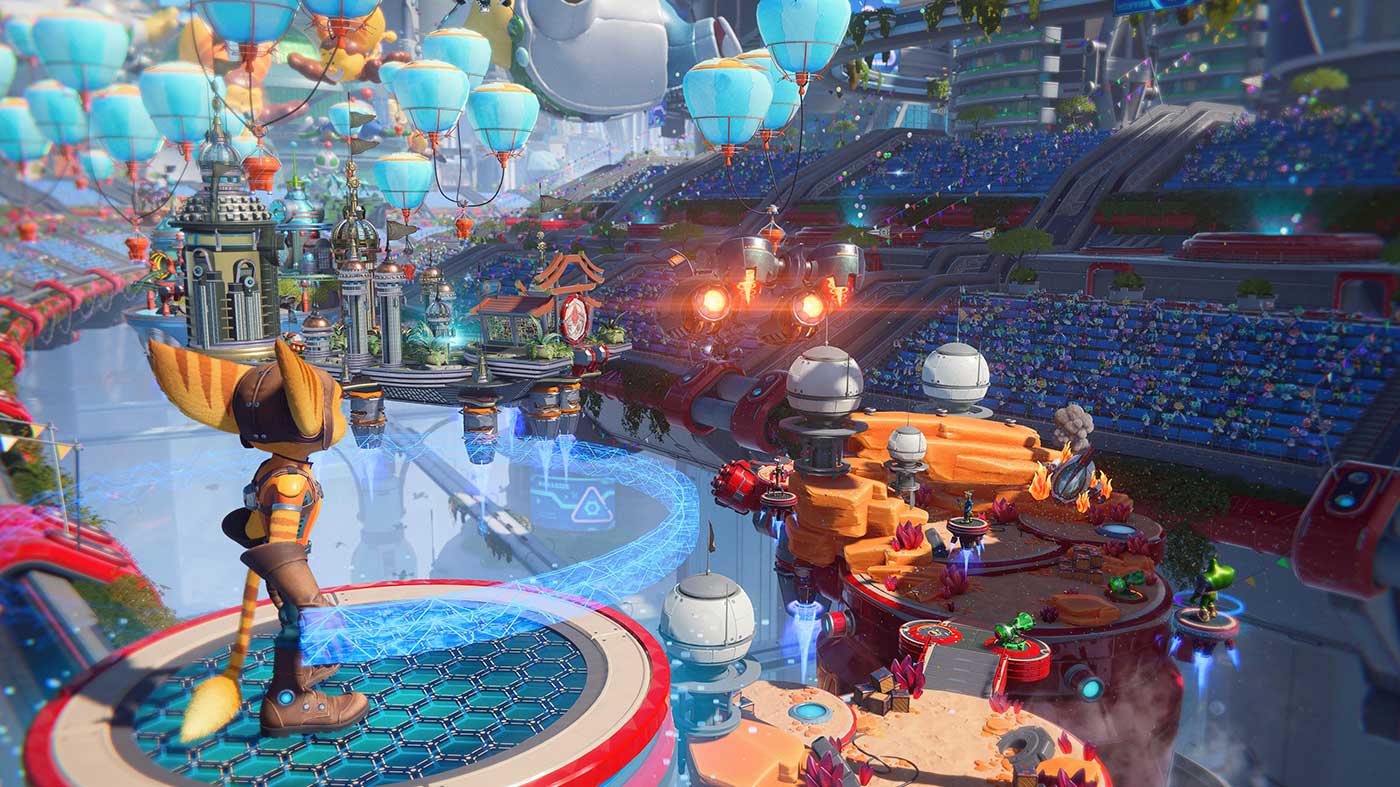
The road to the game’s finale is a rocketing 12-15 hour campaign that takes Rift Apart’s heroes across nine planets, following a mostly-linear path with the occasional opportunity to decide whether to follow either Ratchet or Rivet’s next slice of the adventure. Each planet has its own primary objective to complete to push the story along, but they’re all packed with secrets and collectibles to find as well as the occasional side objective to make repeat visits interesting. If you’ve played a game in the series before it’ll all feel very familiar – a few new movement options like rift tethering, wall-running the fantastic Phantom Dash aside – with the overall game flow comfortably similar to its predecessors. That said, there are some welcome diversions like the ‘pocket dimensions’ that allow our heroes to briefly step into an alternate world mid-level to complete quickfire challenges and earn new armour.
While there are definite highlights, each of the planets is exciting in its own way, despite a couple being criminally short by comparison. Your introduction to Rivet’s dimension is by way of Nefarious City, a densely-packed cyberpunk dystopia ruled by Emperor Nefarious and populated entirely by robots. It’s a stunning locale teeming with life and personality, something that other titles evoked by the term ‘cyberpunk’ struggle to achieve with significantly greater scope. Later you’ll zoom around swamps and mountainous temple ground, before finding yourself isolated and claustrophobic in an undersea take on Alien Isolation – one of a couple planets where activating special crystals instantly swaps the entire level for its alternate-dimension counterpart. There’s something so ridiculously cool about seeing a crumbling, dilapidated facility transform into a clean, bright and well-staffed production plant before your eyes and on command.
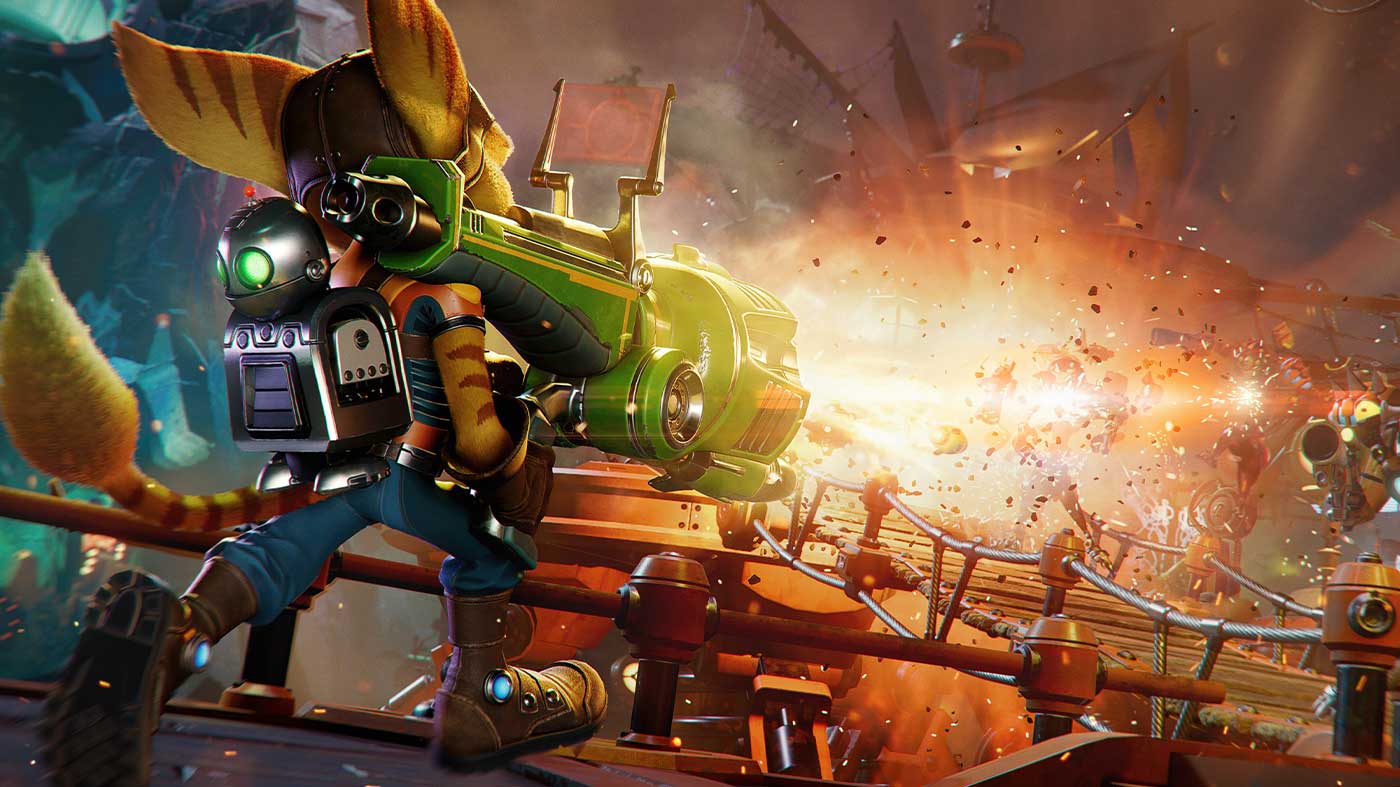
It is a little odd, having the mechanics for ‘portals’ on hand and not seeing them utilised for level gameplay outside of tethering rifts to zip around combat areas. The set-piece moments that see Ratchet or Rivet hurling through a parade of portals from one planet to the next are jaw-dropping, but that idea is largely confined to those moments. Instead of letting players ‘rift’ around or between planets at will, commutes are still made by warp pads and spaceship rides, which seems like a shame. Nothing more than a small, missed opportunity though, and just the tiniest knock on a game otherwise brimming with creativity. Every planet feels incredibly unique, and each is more than a backdrop to the immediate action – they all feature their own self-contained stories and importance to the depth of the world that Insomniac has built.
Of course the true pleasure in travelling the galaxy is seeing the masterful work Insomniac has done in rendering these weird and wonderful places, as well as their inhabitants. When you hear people drop the cliché about video games ‘looking like a Pixar film’ it’s typically something of a half-truth, but when it comes to Rift Apart it feels like that sentiment finally has some legitimacy. That’s obviously due in large part to the game’s status as an exclusive title that’s been built from the ground-up for the PS5, but it’s also a testament to the studio’s raw talent in realising incredible world’s as well as its ingenuity in making the most out of what the console has to offer.
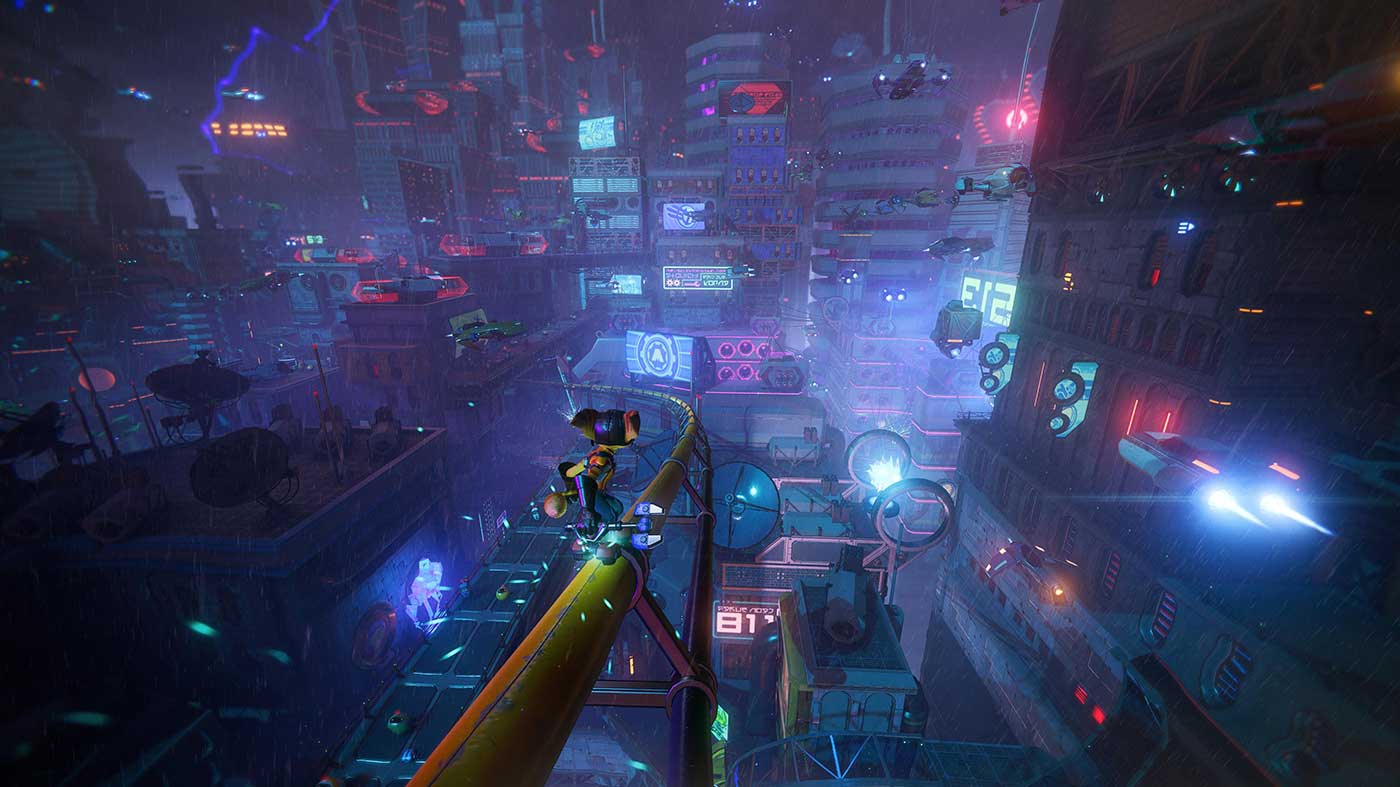
Everything is a step above and beyond the expected; it’s one thing to appreciate the game’s extraordinarily well-animated characters, dense and detailed environments and world-class texture and lighting work, but add an impressively-complete ray tracing solution to the entire thing and it all just comes together so beautifully. The way that cutscenes blend seamlessly into gameplay without a single beat skipped or any visible drop in quality is wild, but doubly so when the console’s ridiculous SSD means that Insomniac has been able to add unheard-of cinematic flourishes like transitional scene wipes from one planet to a completely different one in real-time. We’ve already been treated to a range of eye-watering spectacles in recent years and in the dawn of this new generation, but I can say with confidence that Rift Apart is the single most impressive, polished, film-like visual experience I’ve had in a video game.
While I played through the bulk of the game in the 30fps ‘Fidelity’ visual mode that offers a full 4K resolution with ray-tracing, enhanced lighting and additional effects, I also had modes time to try out the two 60fps ‘Performance’ options have been implemented with the game’s day one update. You can check out what these different modes entail here, but essentially one performance mode offers 60fps at a higher resolution without ray tracing while the other offers 60fps with ray tracing at a lower resolution. There are definitely noticeable differences in overall image quality and/or resolution with these, but it still looks astonishing overall and playing at 60fps feels magnificent, so I can see many opting for this option. If this is what we’re getting from a PlayStation 5 exclusive a mere half-year into its life cycle, I can’t begin to imagine what’s coming.
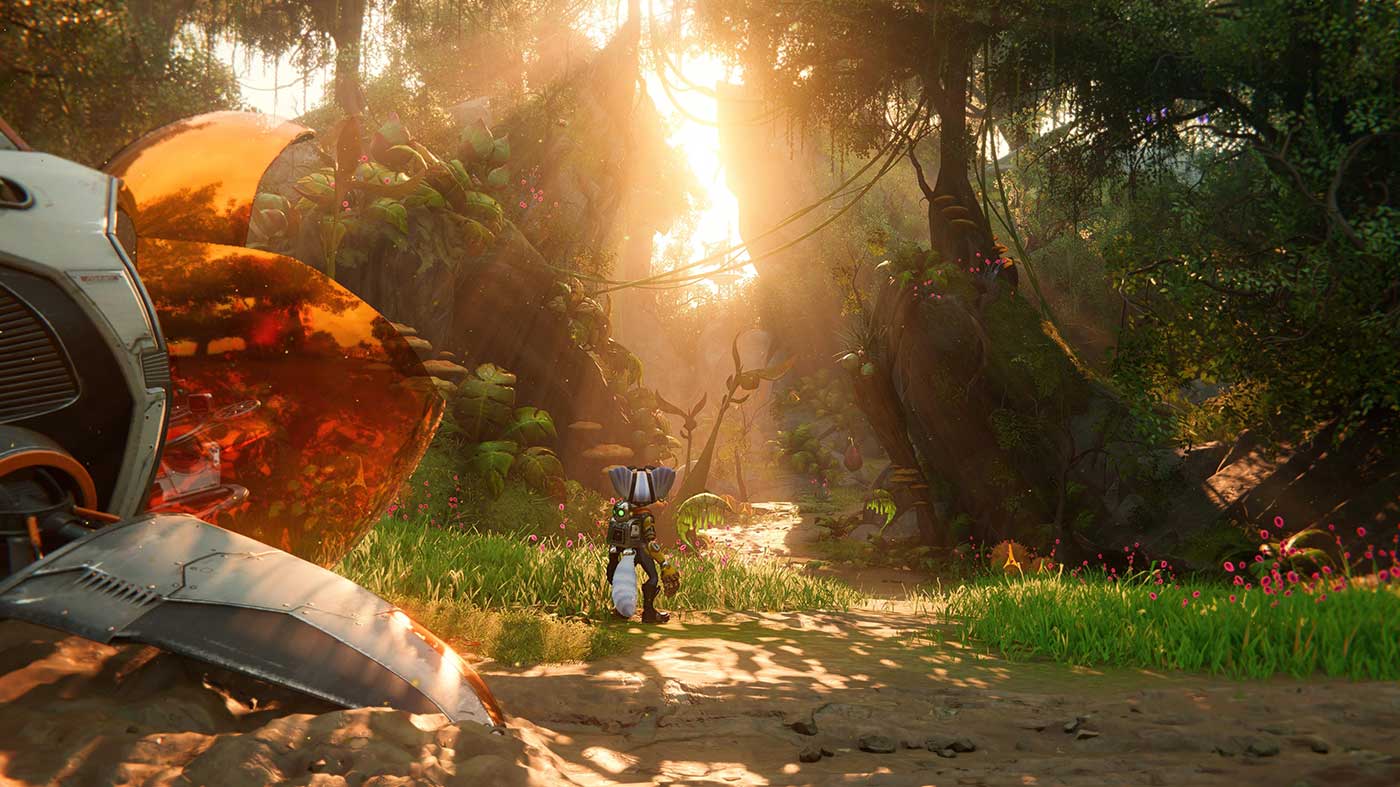
Visuals are only half the story though, and luckily the game is bolstered by a sterling audio offering with characterful performances from a cast that includes names like Jennifer Hale, Debra Wilson and Robin Atkin Downes as well as a gorgeous, rich and eclectic original score helmed by none other than Mark Mothersbaugh. Tempest 3D audio support rounds the package out, adding immense depth to the soundscape when using a compatible headset. Even smaller moments outside of cinematics and set pieces like hearing rifts whoosh around your head as you hurtle towards them (or them towards you, technically) or bolts fly around the screen is a remarkable thrill for the ears.
But for all of its triumphs, there’s one crucial concept that Rift Apart absolutely nails that makes it something unforgettable, and that’s feedback. Nearly every single action both on-screen and off has an appropriate and exciting reaction, and while that feedback comes in many forms it all begins with the DualSense controller. I can’t overstate just how masterfully Insomniac has tapped into what this controller is capable of, both in what it offers for player control and in how it connects players to what’s happening in-game. This isn’t your granddad’s rumble – everything from Ratchet and Rivet’s footsteps, to environmental shifts to weapon fire and that oh-so-satisfying wave of bolts sucked out of every unfortunate, exploded enemy is felt via granular and believable controller feedback. It’s more than gimmickry too, offering an extra sensory gateway that becomes invaluable when sight and sound alone aren’t enough to comprehend the chaos of the game’s firefights.
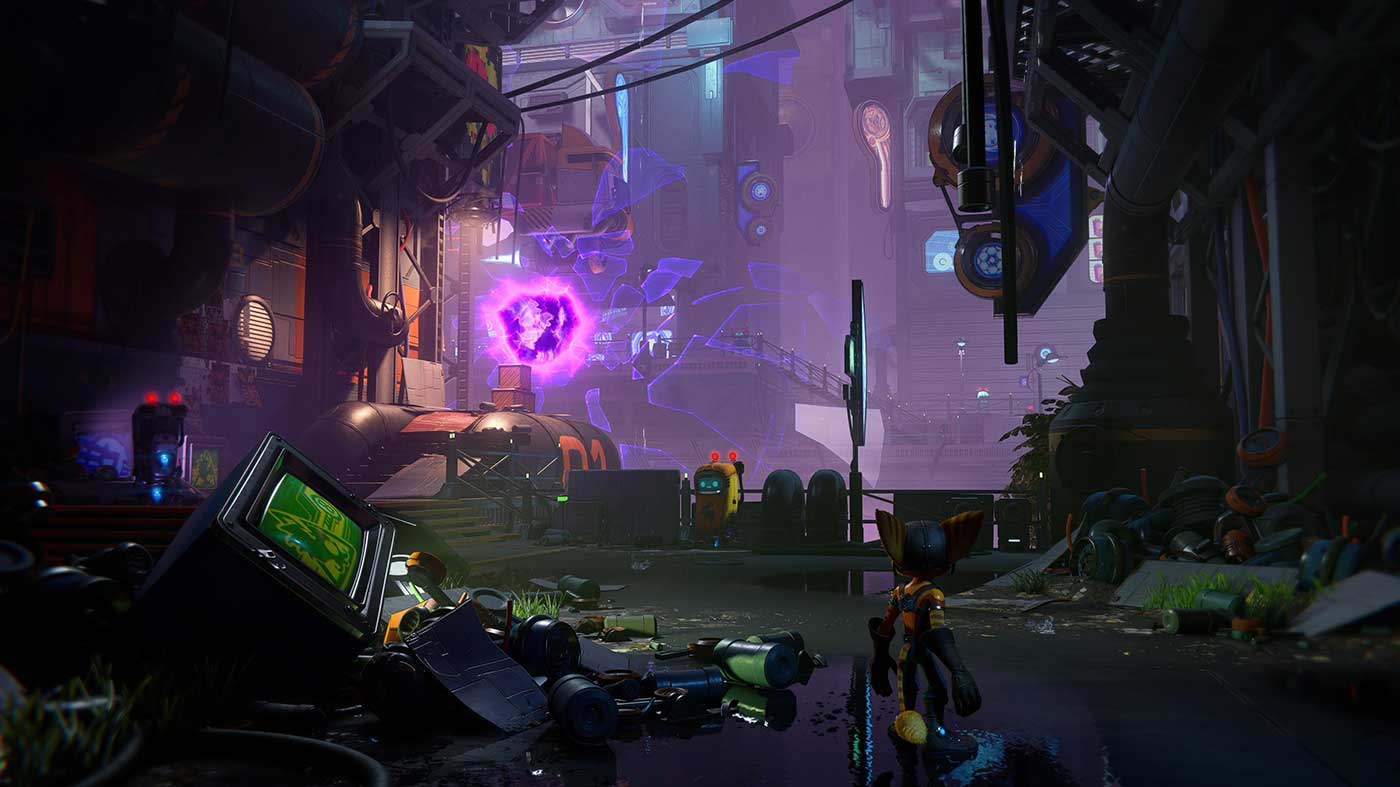
The second part of the equation, the DualSense’s adaptive triggers, are equally important and feel equally built for the Ratchet & Clank series’ particular modus operandi. Though they lend a nice tactility to actions like pumping the accelerators on Ratchet and Rivet’s hoverboots, those high-tech triggers really come into their own during combat. Most weapons in Rift Apart make use of the DualSense’s unique setup, in particular the new ones. Because Insomniac is able to ‘stop’ the triggers at points in between a full press, many weapons have two assigned functions based on either a half or full pull of the trigger.
The Enforcer shotgun, for example, will fire out of one of its two barrels with a halfway pull or from both when the trigger is pressed completely. Or a half pull when holding the explosive Shatterbomb will show its travel arc before committing to the throw by pulling it the rest of the way. It’s an ingenious way to add extra functionality and use to the game’s already-enormous range of weapons (I believe its roster of 20 total weapons is the series’ biggest yet), and anyone who’s played Returnal will understand just how quickly a system like this becomes second nature. Like the controller’s haptics, it gives players an extra layer of connection to the game that transcends what’s being seen or heard and streamlines control to the point that it becomes an extension of oneself. It’s kind of incredible.
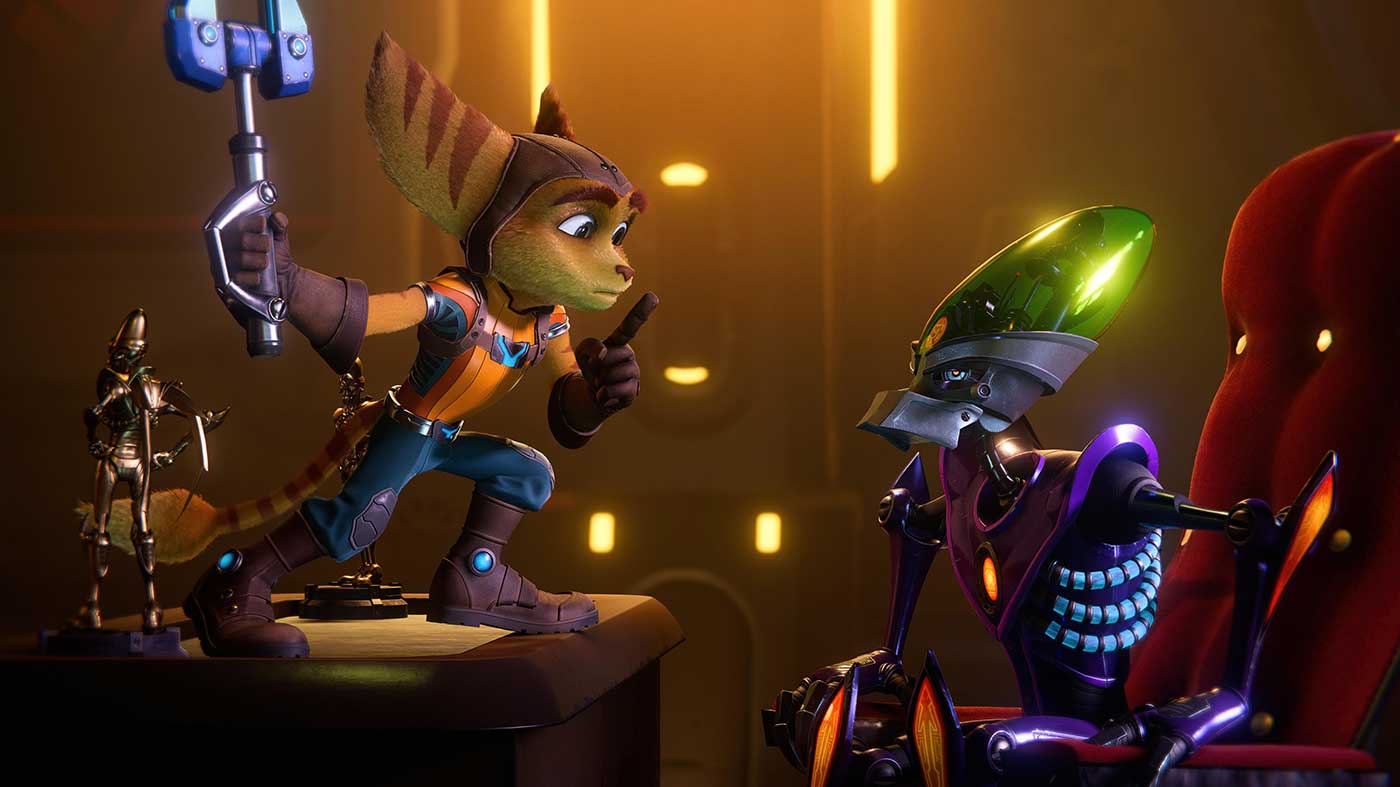
The standout result of this audiovisual and control prowess, this masterful understanding of feedback, is that Rift Apart’s combat is exceptionally addictive. There’s a reason I’ve played through the entire game no less than four times in the three weeks I’ve had with it, despite seeing everything there is to see, and that’s because I just can’t shake the pure dopamine hit of tearing through packs of enemies with Ratchet and Rivet’s wild selection of weaponry. Thanks to a more over-the-shoulder camera and proper aiming, shooting and strafing, this is the end result of the series’ long ascent into pure third-person shooter territory. Every bit of praise I’ve heaped on the game’s visuals, its mechanics, design, the DualSense, all of it comes together beautifully when bullets, bombs and botanicals are flying. It’s an inescapable cycle of joy, where the buttons are exciting to push and when you push the buttons exciting things happen.
Should that chaotic combat – and the game’s newfound penchant for stringing acrobatic feats together – prove too much, it’s good to know that accessibility is at the forefront of Insomniac’s design process. A whole host of options is available to tweak the experience to suit a wide range of individual needs and abilities, from basic comfort tweaks to customisable high contrast shaders that highlight important objects and areas, simplified controls and shortcuts and even a command that slows the game down by up to 70% to help anyone that struggles with the reaction times asked of them.
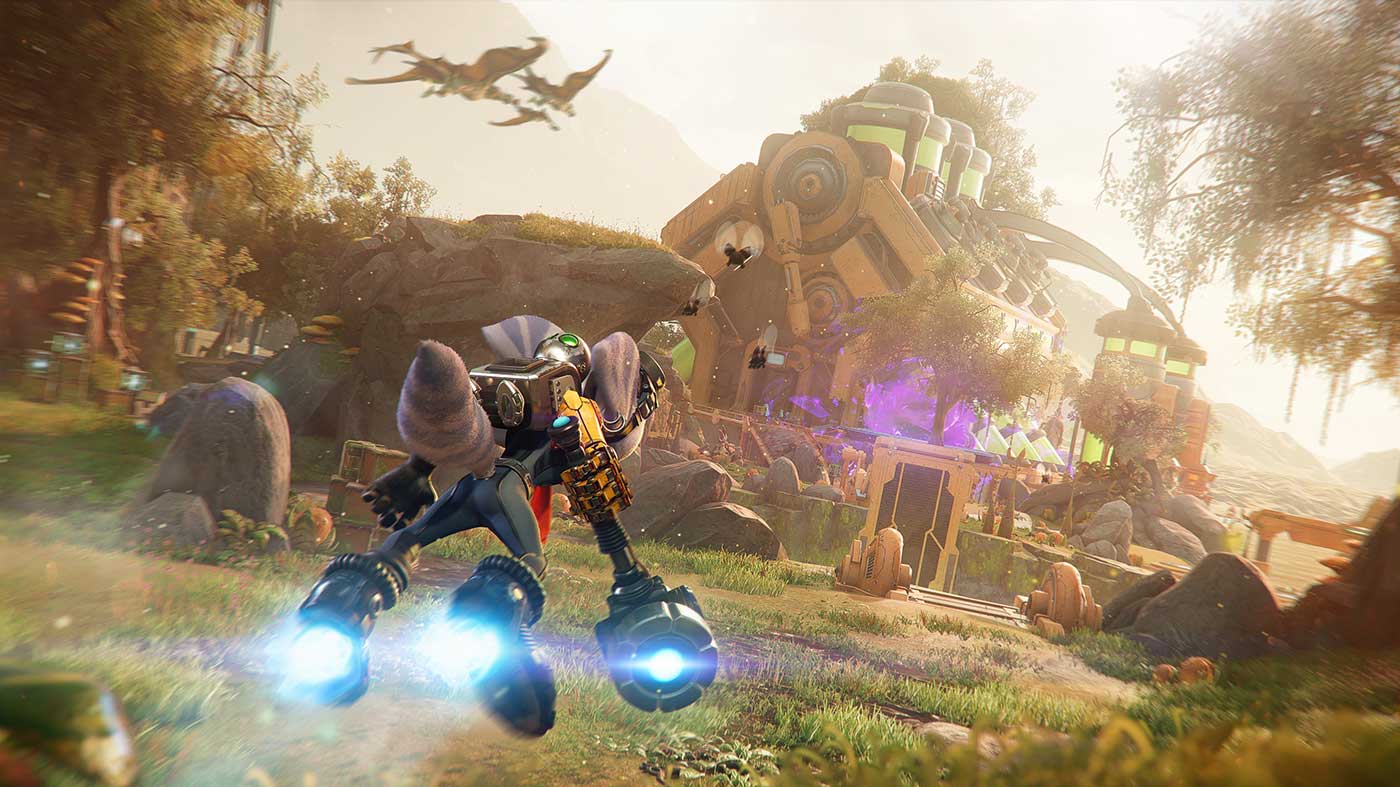
Like other, recent PlayStation first party titles this one doesn’t occupy itself with whether players should be allowed to adjust the inner workings of the game, and even skip certain game sections, and still earn the same accolades as those playing it the intended way. It’s something the rest of the industry should look to as a shining example, and it’s especially welcome when one of the game’s leads has a disability of their own.
Scoring a game like this is tough. Comparisons to other AAA PlayStation titles with richer narratives and more ground-breaking gameplay are inevitable, but a brisk, exciting and explosive action adventure is exactly what this needed to be and that’s what it delivers.

